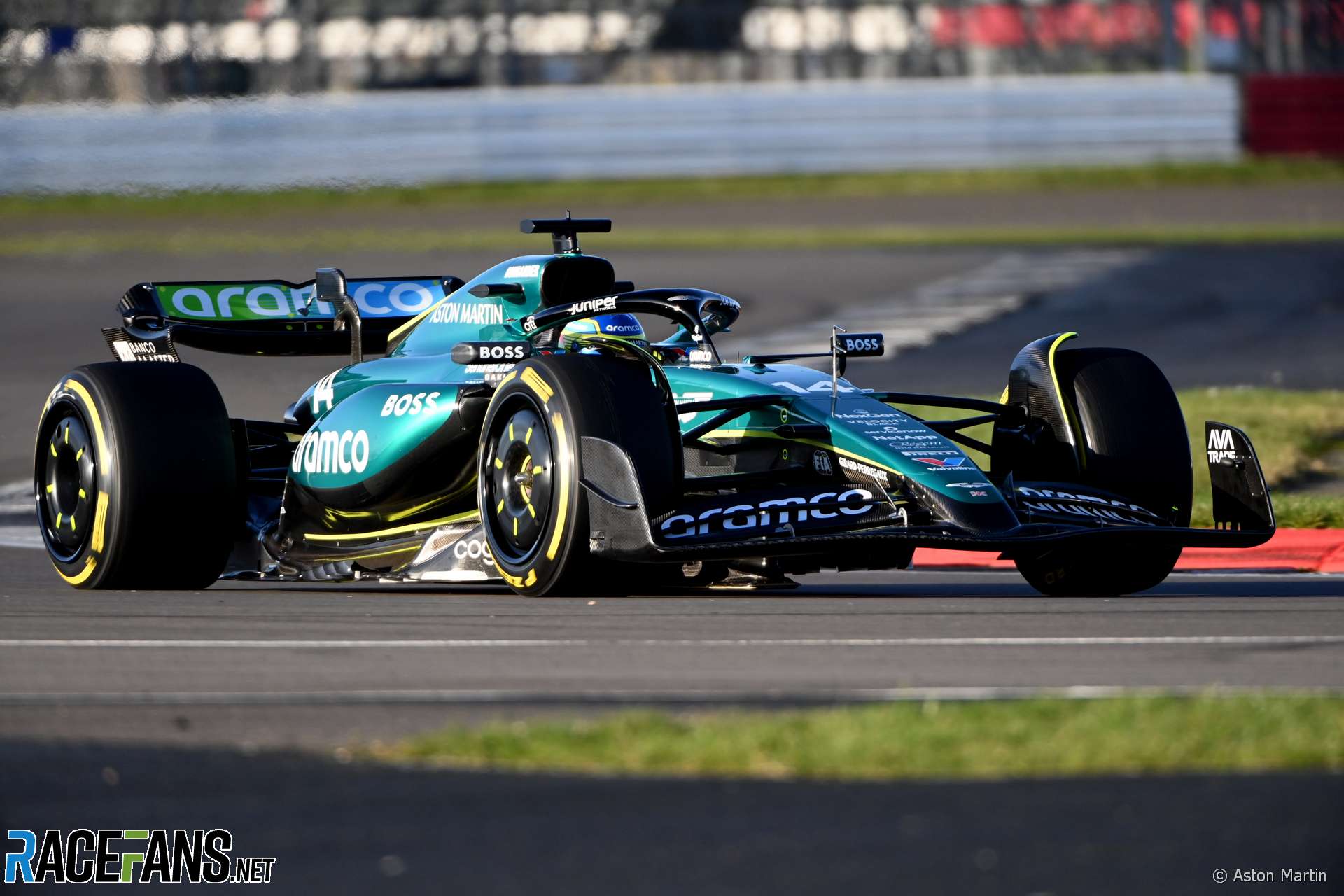Vanja #66 wrote: ↑12 Feb 2024, 23:19
Few details I noticed and how I see them, most of it has been noticed today, but I'd like to expand on the performance influence of it all.
https://i.ibb.co/tPwvn1t/GGIQWb-DXs-AApx-B.jpg
The scale of raising the lower inlet lip should absolutely not be underestimated (red lines), this is a direct performance enhancement in two ways: it leads to more air for the undercut and directly into diffuser and it reduces inlet opening drag. It takes multiple small steps to achieve it (as RB19 evolution shown), but AMR did it's job and I don't think there is room to raise it further. Even if so, they are definitely in the zone of diminishing returns. The curvature (purple) of the lip is significant and this is what speeds up the airflow (as long as it stays attached), reduce pressure locally and draws more air from the top layer inside (white arrow). 7 years ago, when Ferrari SF70H was shown, I was certain the approach we see on AMR24 was the way to further improve those cars at the time, but somehow teams chose to stay conservative and abandon the idea altogether by 2021.
What's interesting here is the clear existence of a sort of wing tip of that inlet lip, which will inevitably generate a vortex (blue arrow). This likely plays a role in generating additional downward velocity vector to draw even more air locally and it may be very helpful in yaw. The final piece of making it all work together is the negative twist in the mirror stay (yellow oval, also present on real car), resulting in downwash flow, even ahead of it. Again, not a huge thing on its own, but a lot of details will add up to an extreme solution working as intended in the end.
The interesting thing is the lack of mirror shrouds (orange oval). These generate more drag, but can be helpful in containing the wake losses downstream. It's safe to say AMR decided against them to cut the drag as much as possible at the moment.
https://i.ibb.co/tsx6CBG/GGIXkx5-Xc-AAayd-D.jpg
Now for some more details head on, to me it seems a lot of them are focused entirely on flow conditioning to ensure these extreme inlets (yes, even more extreme than RB19) are working properly. Top wishbone arms are even more curved now and quite visibly (green lines). Both top and bottom (rose oval, white lines) front arms seem to be very much aligned with front wing trailing edge, especially compared to launch spec AMR23. In my view, this is an important feature. Rear arms seem to be further inclined, with all 4 arms and the push and steering rods working together to maximise local downwash for improved floor and sidepod flow conditioning.
Quite possibly the biggest concept change is the front wing. Not only is the nose joint with the second flap (red circle), but the whole spanwise flow of the front wing is very different and aligned with RB19 philosophy. The nose detail likely increases drag (since there are now two stagnation areas locally), but it also generates more downforce overall due to the exposure of the front flap. There is a clear step away from strong outwash generation (orange oval) and I'm sure AMR figured out how to make sure they don't lose performance this outwash brought, likely with strong interaction of the vanes under the brake ducts. Impossible to say how the drag of front wing and front wheel combined is vs AMR23, but front wing alone is a lot lower drag generator now. And make no mistake, they are using mid-downforce rear wing, so this front wing is not low drag solution by any means.
https://i.ibb.co/stRP7kX/GGIagb-CXAAAte-Vc.jpg
Hoping this bit won't spark too much controversy, since this might be interpreted as eyeball-cfd

Nevertheless, I've marked down what I see happening under the sidepod inlet and this is the same principle RB19 successfully utilised to extend the undercut compared to RB18 - and most likely reduce the drag a bit as a result. As the airflow compresses locally, pressure increases step by step. Right before the local throat section it reaches the peak - before it start accelerating inside the throat itself. I've illustrated this crudely with different coloured lines and also different number of them, though I believe the flow compression bit is quite obvious.
This resulting pressurisation drives the local outwash effect without an actual outwash geometry. Last year, AMR23 featured quite a strong outwash geometry but ultimately it was a draggy solution (as Ferrari noticed in 2022) so this new solution reduces drag by decent reduction of local frontal area. The problem here is to keep pressurisation just high enough, which requires smaller throat but also generates more drag. It's quite a tricky balancing act I would say.
On the top side, the whole top surface is slightly bellow ambient pressure, resulting in overall lift generated on the sidepod as a whole. So no, the sidepod does not generate downforce overall, which is also quite evident by it's geometrical angle between leading edge and diffuser joint - a positive, lift-generating, angle.
Overall, AMR24 shows clear signs of drag reduction and clear improvements of their AMR23 concept. For the 2nd best car in H1 2023, this is the right way to go.
PS
To provide some substance for those eyeball-cfd observations, you can also take a look at my crude AMR23-like sidepod CFD and compare it to Ferrari's CFD results of launch-spec SF-23. Note for comparison, on my plot the ambient pressure is yellow and everything towards red is above ambient. Ferrari's ambient pressure is grey (transparent) and everything above ambient is red, while yellow and rainbow colours towards purple are bellow ambient.
https://i.ibb.co/f1MZfwC/amr23-yaw-0-iso1-cp-sl.jpg
https://imgur.com/MinzNqj.png






